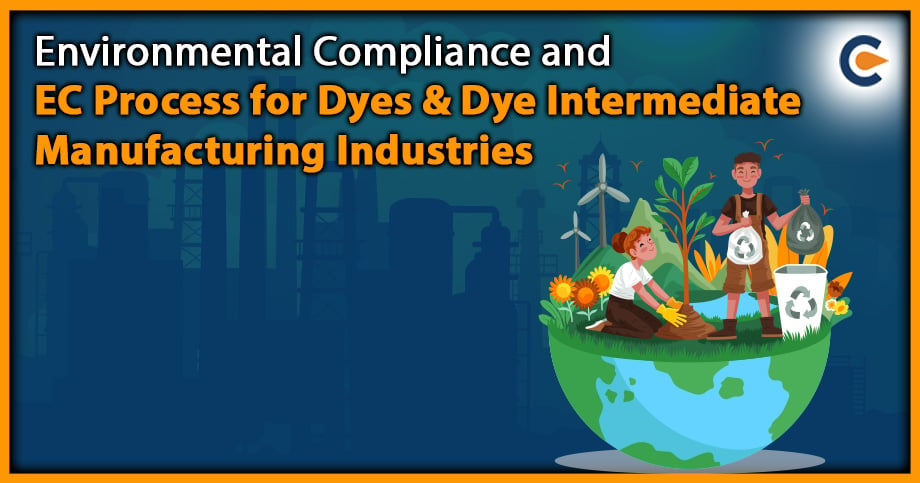Numerous construction and development projects in the private and public sectors are in line today. Operations in the construction sector are of huge concern for any government. Building infrastructural projects in real estate boost businesses and many other related industries. Therefore, the building construction projects were brought under the ambit of environment clearance and require EIA reporting. Unplanned and unsustainable construction can lead to severe impacts on the environment. Therefore, the Ministry of Environment Forest and Climate Change (MoEF&CC) included building construction in the list of sectors requiring EIA for Environment Clearance in the notification of 2006. EC for building construction has been acting as a tool to promote sustainable projects in the construction sector and strengthen the environmental and social mitigation strategies.
With India is becoming a major player in the construction sector, with 35 cities of the country having populations of one million or more and additional cities expected to join the list, the investments and focus on developing infrastructure such as road and highways, real estate projects, energy projects, industries etc., are also expected to increase. Trends indicate a consistent growth of 10% in the real estate sector over the coming years. The EIA notification lays down the process of EC for building construction projects. EIA clearance is required in the case of the following.
a. Building construction projects (=1,50,000 sq .mtrs)
b. Township and area development projects (= 50 ha)
EC for building construction projects are sought mostly in the ‘B’ category as per the EIA notification, 2006. In this article, we will understand the EC process for Building construction projects w.r.t the following
- The updated provisions for environmental clearance of construction projects.
- Site, planning, and development of EMP and mitigating measures.
- Impacts Assessment and implementing mitigation measures for water, air pollution, soil, and noise pollution control.
- Effects of Construction and demolition waste from building materials, Including Solid Waste Management from the site.
- Energy-saving measures, such as bioclimatic design, require and anticipated standards that the developer must adhere to.
Requirements for EC for Building Construction Project
The Building construction projects requiring an EIA report are termed Category ‘B1’, and the remaining projects are termed Category ‘B2’ and will not need an EIA report. The process involves giving a proposal with a brief description of the project. It should include details about the project’s nature, size, location, and significance to the nation and the region must be given in this section. It is important to describe any applicable local, state, federal, and international environmental laws and regulations to the planned activity. Any environmental restrictions or constraints made known by the district administration, the state, or the central government should be provided.
Stages in the EC for Building Construction Project
For categorisation of projects into B1 or B2 except item 8 (b), the MoEF&CC issues appropriate guidelines from time to time. After the finalisation of the concept of the project and site selection, the project proponent has to submit Form 1 and or the proposed ToR to SEAC. The stages in the EC for building construction projects include the following.
- Screening Stager (by SEAC)
All projects and activities listed as Category ‘B’ in Item 8 of the Schedule (Construction / Township / Commercial Complexes /Housing) do not require scoping and will be appraised based on Form 1/ Form 1A and the conceptual plan. Any project or activity specified in Category ‘B’ will be treated as Category ‘A’ if located in whole or in part within 10 km from the boundary of:
- Protected areas notified under the Wildlife (P) Act,
- Critically polluted areas identified by CPCB from time to time
- Eco-sensitive areas as notified under section 3 of the Environment (Protection) Act, 1986, and
- inter-state boundaries and international boundaries.
- Scoping Stage
After SEAC approves the ToR, a draft EIA report must be submitted to the SPCB/ PCC. In the process of obtaining EC for building construction projects, public hearing is not required.
Terms of Reference (TOR)
The Terms of Reference are issued after approval of the MoEF&CC/SEIAA and are based on the recommendation of the Expert Appraisal Committee (EAC) in case of Category A projects and from the State Expert Appraisal Committee (SEAC) for category B projects.
TOR relevant to individual projects is to be added by the proponent. It should be submitted with the application along with ‘Form 1’ and ‘Form 1A’ and the State Level Expert Appraisal Committee. The issues are addressed separately for building construction projects and townships and area development projects.
The ToR address the two aspects of item 8(b) of the EIA notification 2006, given in two subsections (I) and (II), in which subsection (I) deals with building construction projects (=1,50,000 sq .mtrs) and subsection (II) deals with township and area development projects (= 50 ha)
Documents Required For EC for Building Construction Projects
- Project Description
- Essential Top sheets / Maps to be Provided with TOR Application
- Remote Sensing Satellite Imagery
- Digital Elevation Model / Contour Map
- Description of the Environment
- Anticipated Environmental Impacts and Mitigation Measures
- Specific Studies on implications from factors such as building Material and Technologies, Energy Conservation
- Environmental Monitoring Program
- Additional Studies (ERA, DMP)
- Environmental Management Plan (EMP)
- Summary of the EIA
- Appraisal Stage
The draft EIA report prepared by the project for EC for building construction projects will either be approved or rejected by SEIAA. If the draft is approved, the certificate will be displayed on the SPCB/ PCC website and the website of project proponent.
- Post Clearance Monitoring
The project proponent will now require Post Environmental Clearance Monitoring after the completion of the project and a submission of compliance report every six months. In case of category B projects, irrespective of their clearance by MoEF/SEIAA, the project proponent will need to prominently advertise in the newspapers indicating that the project has been accorded environmental clearance and the details of the MoEF[1] website where it is displayed.
Violation of Environmental Clearance for Construction
There have been instances of violations of provisions of the EC for building construction in the form of expansion of an ongoing project. If such changes are initiated without the project’s promoter having obtained clearance for the same of NOC for No change in pollution load certificate, it is considered as the violation of the terms of EC for building construction. The project’s legality must therefore be assessed in light of whether the project or related activity was in any way qualified for prior environmental clearance. For Example: If a Red Industry (Industrial Sectors having Pollution Index (PI) score of 60 and higher) is functioning in a Coastal Regulation Zone (CRZ)-I area, which indicates it was not permitted at the time of initiation of the project.
Violation of EC (Non-Compliant Projects)
Projects that have received earlier EC for building construction but do not adhere to the standards outlined in the approval are also considered a violation of the EC for building construction. In circumstances of project expansion, including an increase in production volume, the government agency may require the project proponent to return to the level of construction or manufacture before the expansion if environmental clearance has yet to be acquired. Fines: If operations have started without the necessary environmental approval, 1% of the project’s total cost as well as 0.25 percent of its overall turnover during the infraction period, will be assessed as penalties. A fine of 1% of the entire project cost expended up to the date the application was filed would be imposed in cases of violation where operations have yet to start (for example, a fine of Rs. 1 lakh for a project worth Rs. 1 crore).
Validity of Environment Clearance for Building Construction
The prior EC granted is valid for 7 years in case of Construction projects. In the case of existing projects whose EC stood valid on 12/04/2022 were granted an extension of 3 years. However, an application has to be made in the prescribed Performa together with an updated Form 1, and Supplementary Form 1A for construction projects or activities (item 8 of the schedule), to the regulatory authority as per the EIA Notification 2006. The authority will, however consult the EAC before the grant of such an extension.
Conclusion
The Ministry of Environment and Forest of the Government of India has reaffirmed its commitment to sustainable development and mandated EC for building construction for a number of development projects proposed throughout the country. Development also raises some environmental issues that must be considered during the construction phase for the benefit for the locals and those who will be occupying that space. Degradation of nature and the ecological balance can affect human health and well-being and places pressure on limited natural resources. Proper assistance from certified experts in the EC process can reduce the chances of rejection of the EC application and the cost incurred.
Also Read:
Environmental Clearance Process In India: A Complete Outlook











